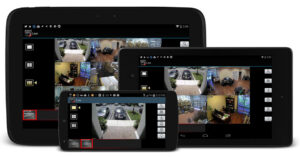
Modern technological developments are increasingly centered on the ability to access information anytime from anywhere. This is true in the security industry as well, as mobile applications that let users access surveillance data have become an integral part of solutions.
The concept of remote monitoring has received much attention over the recent years. According to a report from IMS (now IHS) “remote” had been a bit of a buzzword for video surveillance as early as 2012. Video surveillance as a service (VSaaS) and its ability to provide remote access was then predicted to be an upcoming area in the market.
Fast forward to 2016, almost all solution providers offer their own apps for various mobile platforms, with an array of common functions. But subtle differences in their features and facilities make it important that customers familiarize themselves with them before making a purchase decision.
The most important function that a mobile app for security surveillance should provide is the option to view surveillance feeds, in real time and otherwise. This along with core forensic capabilities for instant viewing of recorded material is the key function of an app.
But while this can be seen as a general requirement, its actual implementation could depend on the vendor’s choices. The nature of storage plays a key role in the remote monitoring functions of the app.
The common feature is they all can support live viewing.The actual implementation can be very different. Many apps can only support live view locally. Remote monitoring can be implemented through server relay or P2P. Remote playback is often supported if the IP camera has local storage.
There are others who offer a different take on the subject. The most basic function of a mobile surveillance app is the ability to see a simple IP camera view, while today’s sophisticated apps can display footage from any number of IP cameras from the across the globe, and allow you to view holistic video. If the solution is cloud-based, it allows the user to use the app without the limitations of onsite storage.
Along with the above-mentioned features, the app should also provide the option to download and share visuals or events. This last point, of “events,” is increasingly becoming a crucial factor in security solutions. A facility to allow event-based actions would require the app to incorporate certain configurations that would intelligently detect elements in the surveillance data *and take adequate reactionary steps.
As more and more end users demand solutions that can be managed from remote locations, mobile apps have become an integral part of security systems. This becomes even more crucial depending on factors like the management’s travel schedule.
Source: a&s Magazine



































































